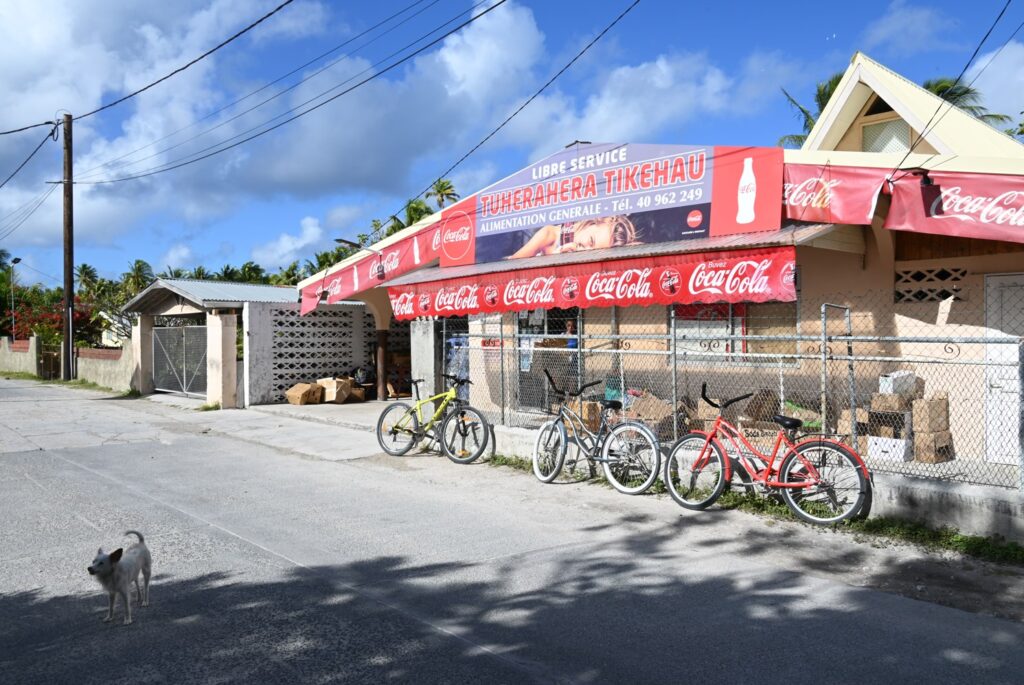THE HAIRY GIRAFFE… IN FRENCH POLYNESIA
After five weeks in French Polynesia, it’s time to reflect. How did we experience this journey? What were our joys, disappointments, questions, doubts, and discoveries? This is not merely an assessment of a country but rather of a trip—how we perceived it individually and subjectively.
 We are François and Benjamin, Canadian and French giraffe hairstylists and travel enthusiasts. On this blog, discover our travels, tips, moods, and everything you need to become a giraffe hairstylist and embark on travelling the world. An honest blog with photos guaranteed 100% unfiltered and untouched. |
How to summarize six weeks in French Polynesia in just a few paragraphs? Too many memories rushing in: swimming with manta rays, admiring the indescribable colors of the lagoons, paying respects at Jacques Brel’s grave, witnessing the dances and competitions of the Heiva festival, paddling a va’a in a Moorea bay, watching sharks circle around us in coral gardens… The scents of tiaré, vanilla, coconut…

Discovering these mythical islands, often ranked among the most beautiful in the world, finally gave substance and reality to these well-known names: Tahiti, Moorea, Bora-Bora, the Marquesas…
And ultimately, acknowledging that the rumors were true, that those who came before us did not lie: we have just traveled to paradise. The journey could have been long and repetitive: wouldn’t we get bored lying on beaches, watching fish swim underwater, and driving around each visited island? On paper, the activities might seem similar.
We explored three archipelagos (the Society Islands, the Tuamotus, and the Marquesas) and eleven islands and atolls (Tahiti, Maupiti, Raiatea, Taha’a, Huahine, Bora-Bora, Moorea, Tikehau, Rangiroa, Hiva Oa, and Nuku Hiva). Each island was different, had its own personality.
Each island was a world of its own. The urban and connected Tahiti has little in common with the remote Maupiti; the mountains and forests of Raiatea are far from the lack of relief in the Tuamotu atolls; the beaches of Moorea and Bora-Bora invite more to relaxation than the cliffs of the Marquesas Islands.
Each island was a new journey. But each island vibrated to the rhythm of Mana, this ‘sacred force’ coming from nature, which gives French Polynesia its uniqueness and the homogeneity of its character. There are places in the world from which emanates an unexplainable mystique, something mystical, mysterious, and inexplicable. French Polynesia is one of those places. And it’s indeed the Polynesian culture that made this journey an extraordinary experience.
The so-called French Polynesia has its own culture. And how could it be otherwise? Over fifteen thousand kilometers separate it from the mainland. Are we still in France? Not entirely but still a bit. The French tourist will find familiar reference points that serve as a means to access the specificities of Polynesian culture. They’ll encounter the cult of the baguette, familiar brands, and, of course, the language.

Unlike many countries with cultures so different from ours that accessing them feels impossible, it’s easy for a tourist to get a taste of Polynesian culture. Polynesians are happy to share their customs and worldview. Every person we met offered us anecdotes, encouraged us to attend local festivities, invited us to fully engage in Polynesian culture (our evening of va’a, the Polynesian canoe, will remain etched in our memories for a long time). For the tourist, everything seems so easy, so simple, so natural in French Polynesia. In fact, it’s so much so that it’s not uncommon to encounter people who settled there after just one trip.
We often paint paradise on Earth as a distant island surrounded by translucent waters. Coconut trees, white sand, and complete tranquility. Airports, roads, supermarkets are never part of this portrayal. Anything related to modern civilization is generally banned from paradise. Yet, if I were to remember one thing from my trip to French Polynesia, it’s this: if paradise on Earth exists, it manages to combine white sand, clownfish, and Carrefour supermarkets.

If this corner of the world has seduced me to the extent of considering, maybe one day, settling there, it’s because these small pieces of land, geographically lost in the middle of the Pacific, remain perfectly connected to the rest of the world. My paradise isn’t the island of Robinson Crusoe; it’s an island, undeniably beautiful, where the ease of daily life comes from the kindness and openness of its inhabitants as much as from the modern comfort it offers. Papeete, the capital of French Polynesia, is a real city. Certainly, with only thirty thousand inhabitants, it’s not a metropolis, but at no point did I feel isolated there.
This feeling of being on a confetti lost in the heart of an ocean, I felt it on the atolls of the Tuamotu, where the total absence of relief made me aware of the vulnerability in case of a tsunami. At fifteen hundred kilometers from Tahiti, the Marquesas didn’t give me this sensation of being in the middle of nowhere or being vulnerable either.
On the contrary, going to Hiva Oa or Nuku Hiva is to travel to the heart of a complete world, in the center of a rich and powerful culture and nature nestled in islands with rugged relief. This variety of natural environments, the richness of the marine life, and the abundance of colorful and fragrant fruits and flowers, all coupled with cultures and traditions unified by Mana, make French Polynesia a paradise different from all others: a real paradise.
So, when are we moving to paradise?

Check out François’ Travel Reflections:
Check out all our other articles on French Polynesia (detailed itineraries, travel reflections, focus on Polynesian culture…):




